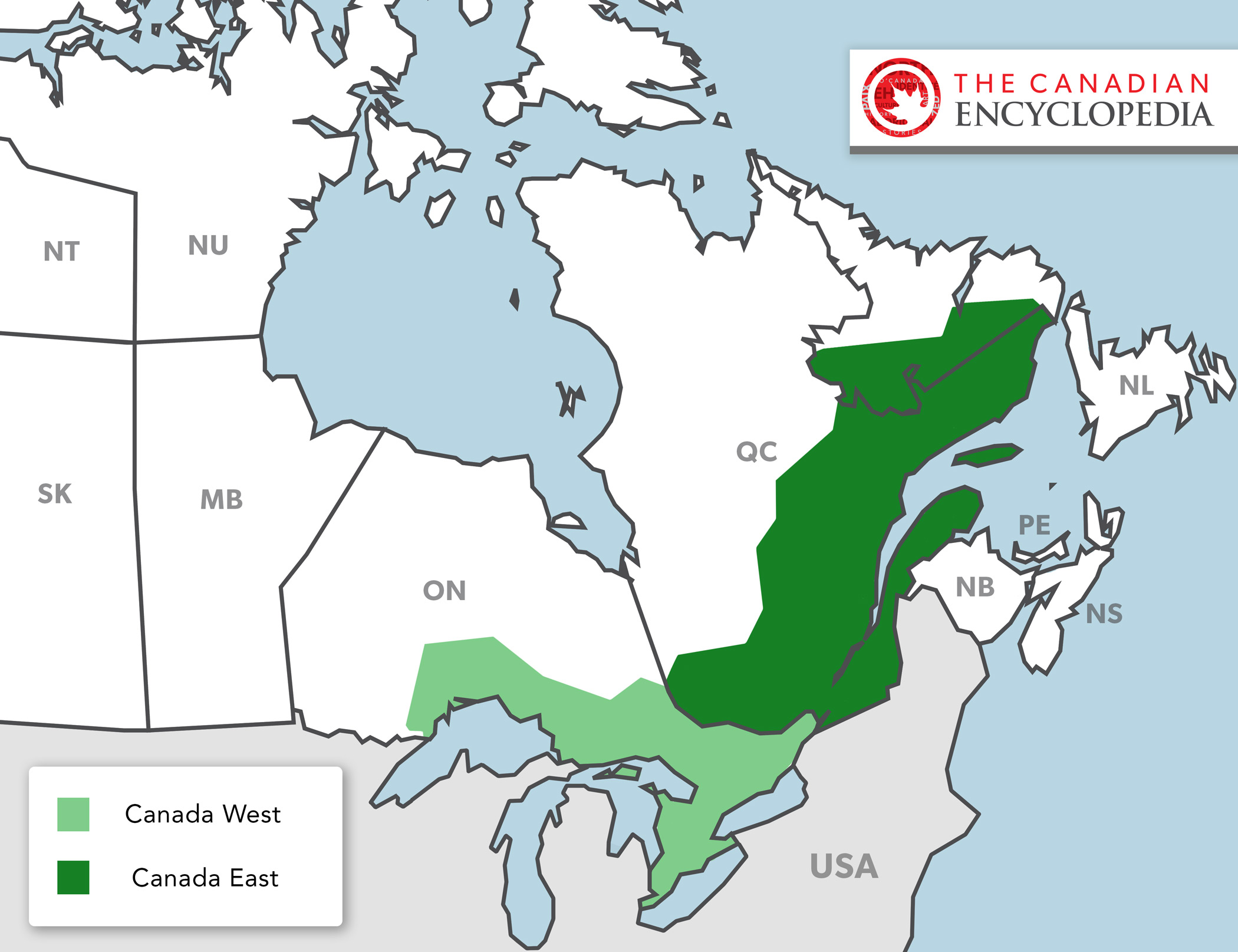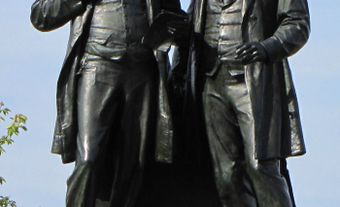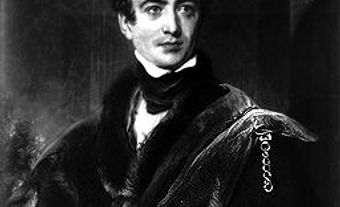The Province of Canada existed between 1841 and 1867. The legislation that created the Province of Canada was called the Act of Union. The Province of Canada included parts of what are now Ontario, Quebec and Labrador. Before 1841, the region was made up of two British colonies. They were called Upper Canada and Lower Canada. When Britain created the Province of Canada, it combined these two colonies into one. In the new colony, Upper Canada became known as Canada West. Lower Canada was known as Canada East. The people in Canada West were mostly English. The people in Canada East were mostly French.
(This article is a plain-language summary about the Province of Canada. If you are interested in reading about this topic in more depth, please see our full-length entry Province of Canada.)

In 1841, Britain combined the colonies of Upper and Lower Canada into a single colony called the Province of Canada. The colony had two regions: Canada West (formerly Upper Canada), and Canada East (formerly Lower Canada).
In 1837 and 1838, Canadians in Upper and Lower Canada rebelled against the British. The British controlled the land and the government. The rebellions made the British worry. They sent a man named Lord Durham to the colonies in 1838. Lord Durham’s job was to find out why the rebellions happened and to decide what to do about them. After spending time in Upper and Lower Canada, Lord Durham wrote the Durham Report. The report made several recommendations. One of them was to combine Upper and Lower Canada. The combined region would have one government.
Durham focused a large part of his report on Lower Canada. He felt that the problems in Lower Canada were the result of conflicts between the French and the English. If Upper and Lower Canada were combined, the English would outnumber the French. Durham believed that English people were better than French people. He felt that if the French were outnumbered, they would have to adopt English customs. He thought that if there was only one culture instead of two, there would be fewer conflicts.
Durham also wanted the colonies to have responsible government. He felt that a unified colony would make this easier. A responsible government is elected by the people and responsible to the people. It would give the Canadian people more power.
Lastly, Durham wanted the colonies to have representation by population. This means that seats in the government are based on population. If a region has more people than another region it gets more seats.
Britain took most of Durham’s advice. It created the Province of Canada in 1841. But Britain did not give the new colony responsible government. This upset some politicians, such as Robert Baldwin and Louis LaFontaine. Together, they convinced Britain to grant the Province of Canada responsible government. Britain did so in 1848.
Britain also did not give the new colony representation by population. Canada East had a bigger population than Canada West. However, both regions had the same number of seats in the government.
Soon, the size of each region’s population switched. Canada West now had more people than Canada East. English people in Canada West now wanted more seats in the government. A politician in Canada West named George Brown pushed for representation by population. He was unsuccessful.
Politicians in Canada West and Canada East could not agree with each other. They could not come up with solutions for Canada’s problems. Two politicians, John A. Macdonald and Georges Étienne Cartier, wanted to solve these problems. They felt that Canada would do better if it was independent from Britain. At first Brown disagreed with some of their ideas. But eventually he changed his mind.
These three men worked together to make Canada independent. In 1867, the Province of Canada joined Confederation with New Brunswick and Nova Scotia. Canada West became Ontario and Canada East became Quebec.

 Share on Facebook
Share on Facebook Share on X
Share on X Share by Email
Share by Email Share on Google Classroom
Share on Google Classroom



